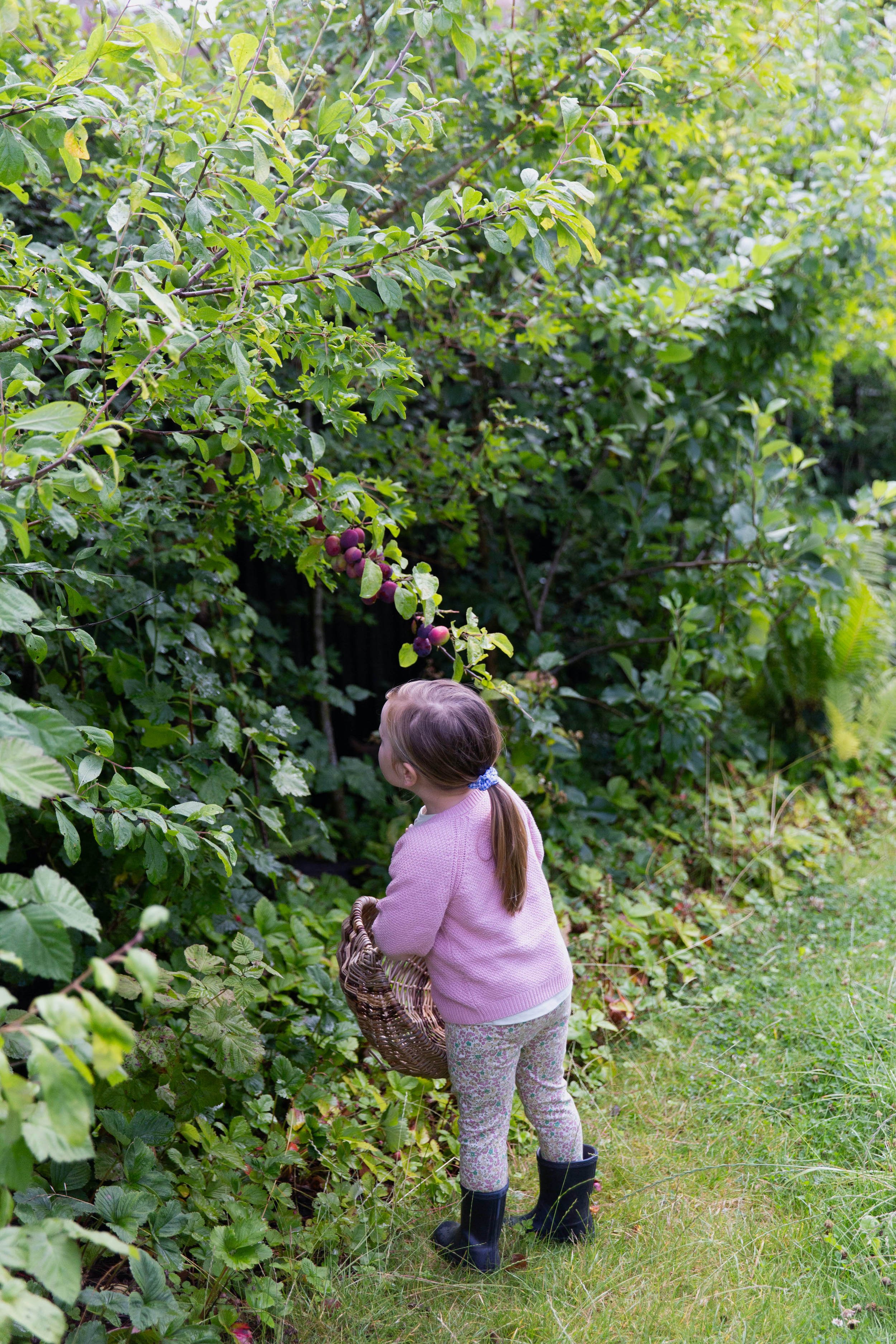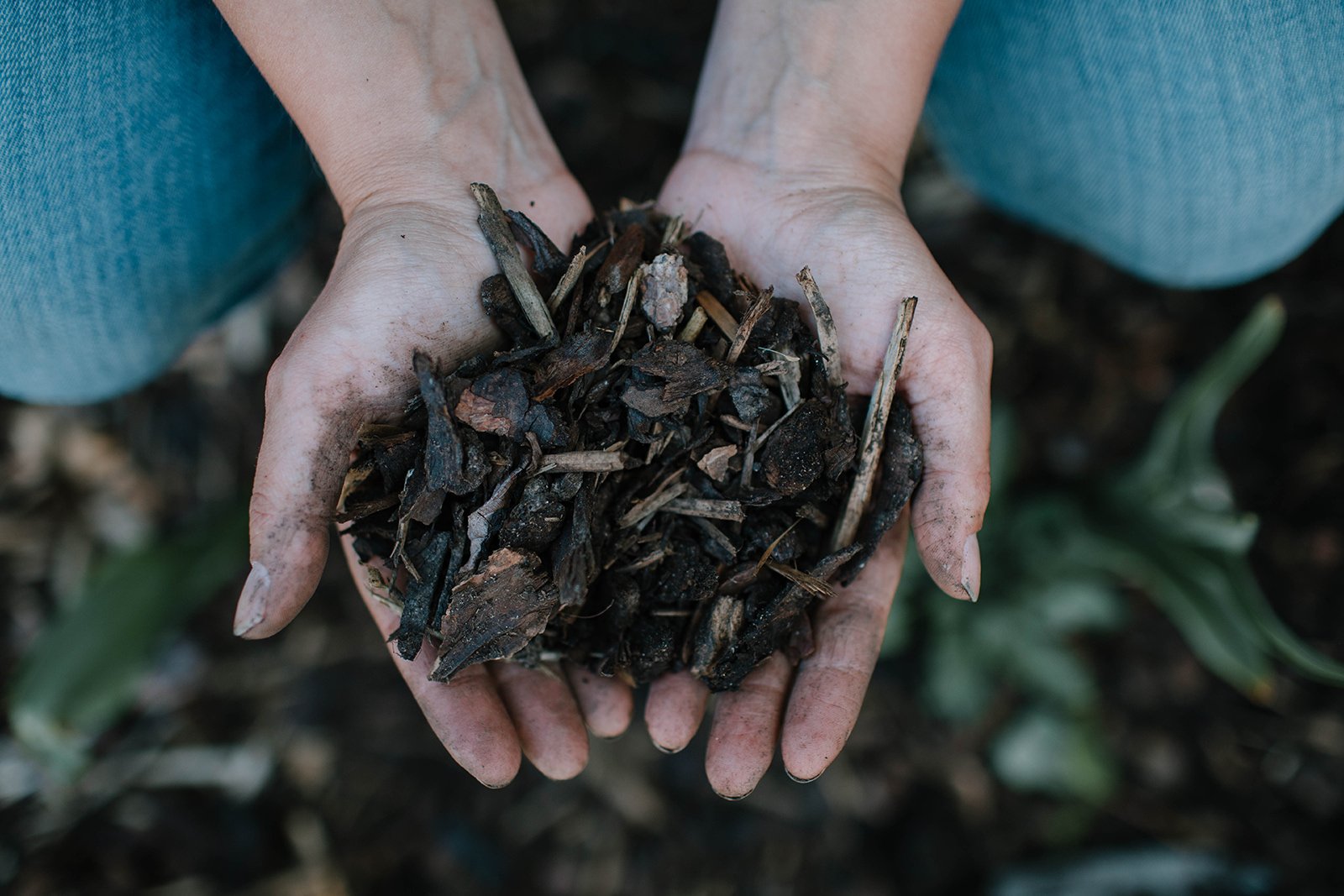Growing an edible hedge
One of the most productive parts of our garden is the hedge running along one edge of the far corner. It’s right next to our bulb lawn, and creates the boundary at the bottom of our garden from one of our neighbours.
When we designed the garden, I was keen to incorporate as many edibles as I could. And I especially wanted to experiment with fitting lots of fruit trees into a relatively small space. One question we’re often asked by clients is how to grow as much fruit as possible, if there isn’t the space for a full-blown orchard. I had an idea that an edible hedge could work, but wanted to test it out in our space first. Three years in, it’s safe to say it’s been a huge success!
Creating the hedge
To form the hedge, we planted a mix of native and traditional hedgerow trees – crab apples and field maples – alongside a mix of semi dwarfing varieties of fruit trees: apples, pears, plums, greengages and damsons.
I wasn’t sure how well the fruit would grow in the more cramped conditions of a hedge; conventional wisdom suggests that fruit trees need to be at least 5m apart and the airflow is very important. But from experimenting with other unusual growing techniques (such as our bulb lawn and the green roof) I know that what you “should” do in gardening books doesn’t always need to be taken as gospel! And I’m so pleased we did try it out, because – far from fruiting poorly – the trees have all thrived and we’ve had really successful harvests.
Harvesting
This year (the third year in), has been the best harvest so far. The apple tree variety ‘Scrumptious’ has been the star performer of the season, with plenty of apples that really are scrumptious. The ‘Conference’ pear tree has grown a fair few pears and the plum tree (‘Victoria’) has given us lots and lots of plums every year. Growing underneath the fruit trees are blackcurrants, loganberries, thornless blackberries and a carpet of strawberries and wild strawberries as groundcover.
We’ve managed to pack in a huge amount of fruit in a very small space and so far, it is thriving. The hedge runs along our east boundary, so the trees are south west facing. The plants are growing quite closely posted together (about 1.5 metres between them) and seem perfectly happy in these relatively cramped conditions.
We’ve been experimenting with the number of trees we can fit in the space, and have been adding a few here and there as we go…
Wild strawberries provide dense ground cover planting under the trees and bushes
Ongoing care
Apple blossom in the Spring
Last Winter, we gave the entire hedge a thorough prune, and we’ll do the same again this year. As with all tree pruning, we start by removing any crossing branches and any dead, diseased or dying wood. We then make sure to thin out the field maples and crab apples, both of which are growing quite vigorously. Pruning them back leaves enough space to encourage the fruit trees to be the dominant species and the native Hedgerow species to form a backdrop.
As each year passes, we’ll keep an eye on the trees, checking they still look healthy and growing happily in their space. But so far, we’ve been really impressed with how productive it’s all been, and delighted to use an area that can typically be thought of as quite a dead space (or at least only good for providing cover) as a place that has given us basket upon basket of fruit, as well as glorious blossom in the Spring, changing leaf colour in the Autumn, and become a real haven for wildlife too!
The edible hedge in early Spring, just coming into leaf
A harvest of plums










